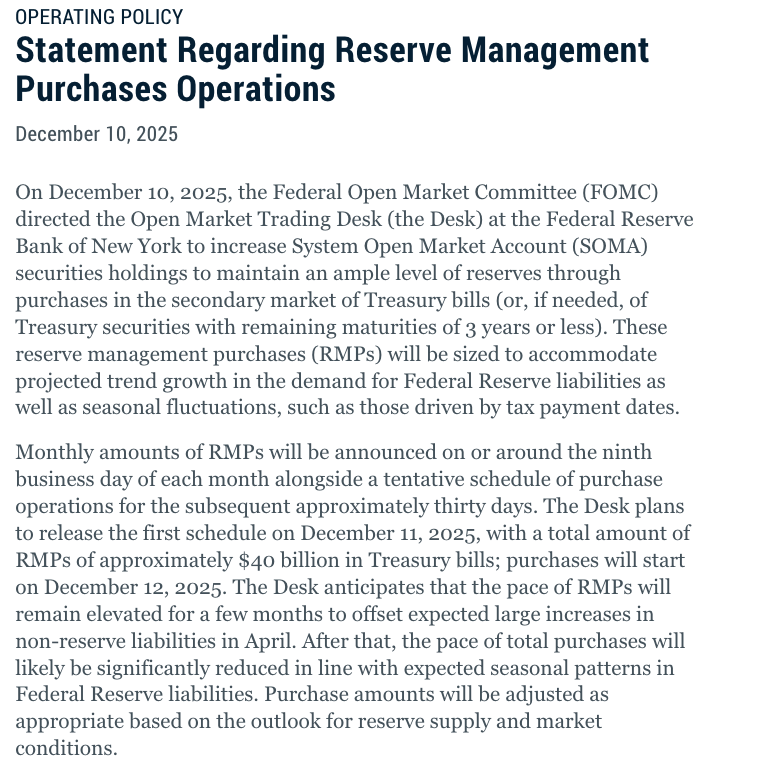forget about SBV liabilities for a second, the real bailout story is the regime-change in the Fed's treatment of collateral:
par value goes against every risk management commandment of the past 30 years.
it turbocharges the monetary power of collateral
par value goes against every risk management commandment of the past 30 years.
it turbocharges the monetary power of collateral

with 1990s shift in open market operations from outright purchases (of sovereign bonds) to repo loans against collateral (sovereign or other), central banks adopted 'modern' collateral valuation:
- collateral at market price rather than par
- haircut on market price
- collateral at market price rather than par
- haircut on market price

the logic was intuitive (and pleased German lawyers/monetarists greatly):
central banks' collateral framework must be conservative - with strict focus on high haircuts and collateral quality - to minimise moral hazard
central banks' collateral framework must be conservative - with strict focus on high haircuts and collateral quality - to minimise moral hazard

until yesterday, in my 15 years of researching central banks collateral I have never heard one single central banker contesting this common wisdom: never, ever par value 

we in Europe know painfully well how systemic haircuts can be - both for banks and for the sovereign issuers of bond collateral.
ECB used 50% haircuts on Greek sovereign bonds as a fiscal disciplinary device
ECB used 50% haircuts on Greek sovereign bonds as a fiscal disciplinary device

imagine, for a second, that Trichet told every Greek bank tapping its LOLR in 2011 that it could get par value for its Greek government bond collateral, instead of 50% of market value.
the Euroarea would be in a very different place right now
the Euroarea would be in a very different place right now
had ECB done what Fed did yesterday, farewell my scholarship on #shadowmoney examining how pro-cyclical collateral treatment forced central banks to reinforce LOLR with market-maker of last resort 

it is not yet clear to me whether the Bank Term Funding Program will mark collateral to market daily - in which case, this is a partial regime change, but wow.
Dan is right - this is a subsidy, this is why I called it the real bailout
https://twitter.com/dsquareddigest/status/1635175605598834689?s=20
ECB peeps, would be great to get Ulrich Bindseil's views this morning, I for one take this as a victory
ecb.europa.eu/pub/pdf/scpops…

ecb.europa.eu/pub/pdf/scpops…

3 years later, the Derisking Revolution is back - the Fed has just told shadow/banks it will monetise US Treasuries at par rather than market value.
https://twitter.com/DanielaGabor/status/1355166711847284743?s=20
the Fed's new collateral regime:
- all collateral owned before March 12 eligible
- fixed 1yOIS+10bp interest rate
- banks can unwind at any time without penalty (hi my mortgage lender)
Nothing on:
- collateral valuation
- no 25bn limit!
- all collateral owned before March 12 eligible
- fixed 1yOIS+10bp interest rate
- banks can unwind at any time without penalty (hi my mortgage lender)
Nothing on:
- collateral valuation
- no 25bn limit!

the US Treasury providing a USD 25bn 'credit protection' to the Fed is not the same as the Fed limiting the BTFP at 25bn.
It's just a 'hush the Germans' handwave.
It's just a 'hush the Germans' handwave.
increasingly convinced that Fed wouldnt accept par value for collateral on day 1 of BTFP loan, then mark to market on day 2 - it would automatically exacerbate bank funding pressures
So either Fed suspended collateral valuation permanently or reduced mark-to-market frequency
So either Fed suspended collateral valuation permanently or reduced mark-to-market frequency
but then what would be the new frequency if not daily?
do you mark to market once a month and abandon the 'par value' collateral regime? any frequency threatens cliff effects
do you mark to market once a month and abandon the 'par value' collateral regime? any frequency threatens cliff effects
as @alexandrascaggs points out, some stressed US bank may not have enough BTFP eligible collateral - but am unclear what's the overall par value size of the eligible universe
https://twitter.com/DanielaGabor/status/1635018935291752450?s=20
2 hours to this, fingers crossed we dont get another bank run by then eh @M_PaulMcNamara @toby_n
https://twitter.com/DanielaGabor/status/1635233231154065408?s=20
countdown to BTFP collateral eligibility extended to (almost) everything @alexandrascaggs
https://twitter.com/IrvingSwisher/status/1635260348201857028?s=20
guys, dont sell your UST, you can pledge it at par value w the Fed
https://twitter.com/johnauthers/status/1635282226488438786?s=20
@Lagarde oh look, the accurate codeword for par value collateral regime, soon at a central bank near you
https://twitter.com/Kathleen_Tyson_/status/1636064084058570752?s=20
@Lagarde you know what #CreditSuisse is really asking is Buy the Fu... Papers (especially since SNB accepts foreign collateral too - EUR, USD, GBP, everything HQLA) 

why would you sell securities you can monetise at the Fed for par value?
https://twitter.com/zerohedge/status/1636045372836528131?s=20
• • •
Missing some Tweet in this thread? You can try to
force a refresh









